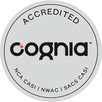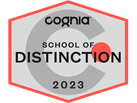IDEAVENTIONS ACADEMY
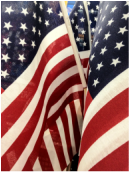 With the 4th of July right around the corner, I thought it was appropriate to discuss the Pledge of Allegiance and whether it should be part of the school day. It may seem like one small decision among many, but I’d like to share our thoughts. We think it is an important decision as we prepare for our inaugural year at Ideaventions Academy. What? In making the decision, we had to start at the beginning and think through what the Pledge of Allegiance means to us. We view the Pledge of Allegiance as an oath to the flag, which represents the ideals of the United States defined in the Declaration of Independence: “We hold these truths to be self-evident, that all men are created equal [Equality], that they are endowed by their Creator with certain unalienable Rights [Rights], that among these are Life, Liberty [Liberty] and the pursuit of Happiness [Opportunity]. That to secure these rights, Governments are instituted among Men, deriving their just powers from the consent of the governed [Democracy].” Who? I’m a first-generation immigrant to the United States. My father was born in Cambodia and myself and my mother in Venezuela. I emigrated from Venezuela when I was seven. When I started school in the US, I remember trying to learn the Pledge so I could recite it with the rest of my class every morning. I barely spoke English and did not understand what it meant, but I wanted to fit in, so I said it like all of the other kids in my class. It wasn’t until 7th grade when our Humanities teacher taught a lesson on the Pledge and what it stood for that I finally understood what it stood for. Even though I wasn’t a US citizen yet, I now stood proudly and recited the Pledge, no longer out of routine, but because I felt American and believed in the ideals of this country. Finally, in college, when I was able to become a citizen of the United States, I proudly took the naturalization oath. Why? When I remember my cousin, as a 12-year old, telling me about what she would do to survive the rice fields of Cambodia or when I think about another cousin and her newborn daughter in a bathroom so that the tear gas from last year’s protests in Venezuela wouldn’t harm the baby, I am thankful for the peaceful life my children are able to live. When I think of the currency exchange restrictions placed on my family that makes it impossible for them to travel outside of their country, I am thankful for the freedoms I have. And when I think of my father’s family, who I never met because they died for being educated, I am thankful for the men and women, including Ryan’s grandfather, father and brother, who have defended my and my children’s way of life. So, when we had to decide if, as a school, we would say the Pledge of Allegiance, it was a very easy decision to make. As a school we will stand and say the Pledge. As a school, we will also provide students with the lesson that my teacher provided me, which gave me freedom to make an informed decision on whether or not I wanted to continue to say the Pledge. Finally, whether or not to say the entire pledge, or parts of the pledge is a very personal decision each student and teacher makes for him or herself, which we respect. I hope that you have a wonderful Independence holiday weekend!
0 Comments
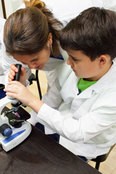 Dr. Mariana (or Dr. M as the kids call her) is back this week to discuss our philosophy behind our biology curriculum. "Since leaving a career in research to work at Ideaventions, friends often ask me whether I miss the bench. The truth is, there are some aspects of research that I miss very much. I miss being on my feet all day, juggling different experiments to get that crucial piece of data. I miss the camaraderie that is born of shared experimental woes and long-awaited success. I miss the moment when the data comes together into a little nugget of knowledge worth sharing with other scientists. And so I am very excited that research will be an integral component of our biology curriculum! I feel very strongly about the importance of a true research experience in any scientific education. By its very nature, research provides a deep understanding of the scientific process. Students learn early on about the key elements of the scientific method: make an observation, formulate a hypothesis, carry out experiments, analyze results, and draw a conclusion. And yet engaging in research sheds a new light on this all-too-familiar scheme. Your initial observation may be due to experimental error, yet in pursuing this observation you may make a fascinating discovery. Your experiments may yield a surprising result, leading you down a novel research avenue. Your hypothesis may be proven wrong, taking you back to square one after months of effort. Scientific research is rarely a straight line from point A to point B (as many biology laboratory courses would have you believe), instead taking many twists and turns to reach an unexpected destination. Beyond key concepts and techniques, engaging in research teaches a unique skill set that will prove valuable regardless of career path. This skill set includes academic rigor, critical thinking, high ethical standards, and communication skills. Most importantly, research teaches perseverance and resilience. You may have heard that research is ninety percent failure - I can attest to the validity of that statement. The brilliant experiment you spent a week designing will most likely fail to give any conclusive results. If by any chance your experiment does work as expected, the initial promising result will be irreproducible. Both scenarios lead to months of optimization and troubleshooting, all in search of that elusive eureka moment every scientist lives for. Finally, becoming an active member of a research community reveals that science is a profoundly human endeavor. The rivalries! The backstabbing! The money to be made! Like all of us, scientists are misled by their hopes, their biases, and their ambitions. Well-acknowledged scientific "facts" have been proven wrong, and long ridiculed theories are now written in textbooks. This is not a flaw of the scientific process, but rather an inescapable reality that we must be aware of. Our biology curriculum will draw on a variety of resources to cover five main areas of study: ecology, cell and molecular biology, genetics and evolution, plant biology, and human body systems. As part of our year-long biology course, students will work on an unanswered biological question in one of the above areas of study. Some areas - such as evolution and human body systems - will be difficult to study in the Academy setting due to practical and ethical constraints. Other areas - such as ecology, plant biology, and cell biology - will be better suited to student-led research projects. Our ultimate goal will be to make a meaningful contribution to the scientific body of knowledge, while learning key biological concepts and acquiring a variety of lab techniques. By participating in original research, we hope that students will be inspired to learn independently and experience first-hand the joy of discovery. I look forward to guiding the young scientists in their investigations!" 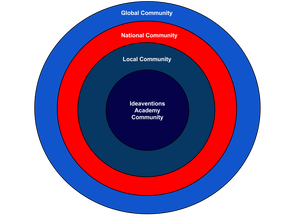 Community. Merriam-Webster defines community as “the people living in a particular area.” Community Service. Oxford Dictionary defines community service as “voluntary work intended to help people in a particular area.” It was with these definitions in mind that we defined the Community Service curriculum, which broadened how one usually thinks of community service. Being a new school we’re building a community from the beginning. This community is made up of our students, our faculty and our students’ families, and before we can begin to impact our broader community, we have to build our own community. The learning objectives for Community Service are three-fold:
Ideaventions Academy Community We will spend the first two months of the school year focused on laying the foundation for the Ideaventions Academy community. After the initial two months, each Community Service class will include a lesson in how to be a member of our school community. We are very excited that our inaugural class of students will have the opportunity to shape the Academy through the creation of our Honor Code. Students and faculty will work together to learn about ideals, honor, integrity, and trust, then using this knowledge, draft a code that will withstand the test of time and that we can abide by as a community. By the end of the first two months, students and faculty will know and understand the expectations of being a contributing member of this amazing community. Our community’s expectations on compassion, respect, bullying, acceptance, friendships, honesty, and choices will be worked and defined by students and faculty to lay the foundation for the rest of the year. After the initial two months, we will lead short, 20-minute lessons on more nuanced skills that reinforce the work done. Topics of these lessons will range from understanding stress and anxiety within oneself, to sharing, be it a lab tool or credit in a scientific publication, to how to handle exclusion in a group. The spectrum of topics covered will create the glue for this tight-knit community. Broader Community Once we have defined what it means to be part of the Ideaventions Academy community, we can then venture out to begin to impact the broader community. The broader community can be our local Reston community, our state, our country or our global community. The possibilities are endless. Through this work, we’ll always look at the geographic area that we’re influencing and the communities that we hope to help. An aspect of the curriculum is to introduce students to the wide range and scale of causes, which include pollution, animals, poverty, and natural disasters. As part of the selection of a service project and background research, students will learn about the various social causes and gain an appreciation for the diversity of communities. Impacting Communities This is the area of the curriculum that most people think of when one mentions Community Service. Our goal is to teach students the skills that they need to make an impact. Many of these skills are transferrable to entrepreneurship and other professional communities like the scientific community. As students may be working in a class of eight to ten students, it is not feasible to run eight to ten separate community service projects. Instead, we’ll be using a framework that mirrors the “real world.” We want students to feel empowered and to have choices. Therefore, we will not be dictating the project that they will undertake. Every student in the class will draft a proposal for the project of their choice. Students will create rating criteria that will be used. Each student will then blind-rate all of the other project proposals based on the agreed-upon criteria. One or two project proposals from the class will be selected as the class project(s) for the year. By being active participants in this multi-step process, students commit to the choice for the class and learn how to evaluate potential work, as well as their own. The method for choosing the project(s) mirrors the grant process for a non-profit, the funding process for a research project or the venture capital process in a start up. The next phase is project execution or implementation. In addition to actually doing the project, in this phase of the project, we learn about planning, marketing, funding or fundraising, goals, project roles, unintended consequences, and documentation. Finally, we either complete the project or we decide to sustain the project into the future. In conclusion, from this curriculum and experience, we believe that students:
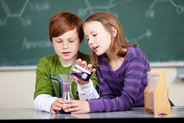 I am excited to welcome Dr. Mariana as a guest blogger today. I’ve enjoyed watching Dr. Mariana teach Ideaventions’ homeschool Molecular Chemistry class for middle schoolers this spring and it has been a true pleasure to work with her on designing Ideaventions Academy’s Molecular Chemistry full-year curriculum. “What were the most memorable moments in my science education? Which teachers and mentors had the most impact on my career? As a teacher, what core concepts and skills do I want to share with my students? What do I want my students to remember ten or twenty years from now? How do I best achieve this? These are the questions that have been running through my mind as I prepare to teach a year-long, formal chemistry course at Ideaventions Academy to our inaugural class of students. To approach these questions, I have been reflecting on my own school experience and reading modern trends in education. I am finding that there are no easy answers, but would like to share some of my thoughts with you. Looking back on my science education, a few awe-inspiring moments immediately come to mind. Standing among hundreds of fluttering monarch butterflies. Tracing the brainwaves of a fish on an oscilloscope. Holding a petri dish full of human cells in my hands for the first time. Watching a cell divide under a confocal microscope. As I write this, I realize that none of these memorable experiences happened in a formal classroom setting. I loved school - from kindergarten to grade school to graduate school - and I always did well. School was a game that I enjoyed playing and became very good at: attending classes, completing homework assignments, passing tests. But something was missing throughout my many years as a student in science classrooms: the freedom to explore, the thrill of discovery, the "spark" that makes it all worth it. I didn't experience this until I first joined a research lab, through a collaborative program between my high school and a local research institute. Why wait so long? What about those students who aren't fortunate enough to have a research experience? What about those students who become discouraged somewhere along the way? As we were researching curriculum options for our chemistry course, we were looking for a curriculum that would provide ample opportunity for students to experience these "spark" moments. Chemistry is at the root of so many different disciplines - from geology to biology to materials science. But chemistry is tricky because so much of it relies on understanding the behavior of atoms and electrons, tiny particles that we can hardly see with our most powerful microscopes. We were excited to find a chemistry curriculum designed to bridge this gap, linking the nanoscopic world of atoms with the macroscopic world we experience every day. This curriculum is Active Chemistry by It's About Time. Here is what we like about Active Chemistry:
Altogether, our chemistry course will be a fantastic learning adventure for everyone involved! And while I doubt the students will recall electron configurations or redox reactions twenty years from now, I very much hope they will look back fondly on our chemistry explorations and recall a "spark" moment of their own." 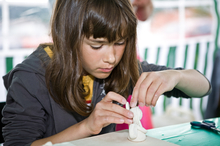 For purposes of this post, when I refer to Art, I am referring to the Fine Arts and Digital Arts. Music and Drama, which are also arts, are covered separately. A few years ago I had the pleasure of meeting a very accomplished artist, Alessandra Ricci. It all started because I wanted to give a gift that blended science and art, and Alessandra created this magnificent work of art using a portrait of John Snow (the epidemiologist, not the actor) on a scarf. It had been many years, but seeing what she was able to create, brought back memories from high school and spending time at the National Gallery of Art admiring the work of Thomas Cole and Albert Bierstadt after my internship at the Air and Space Museum. Going into this year and planning the school, when we discussed Art, it evoked feelings of wonder and peace. Art, however, is not traditionally a required course in Middle School. Therefore, the first question we asked ourselves was, “Should it be an elective or should it be part of the core curriculum?” The next question we asked ourselves was, “What are our learning goals for our students related to art?” To answer the first question, we had to answer the second question. Our goal for art is very similar to our goals for science: to expose students to this wonderful world of beauty and expression so that kids become aware of what is out there as they find an area (or areas) that appeals to them. We also want to teach students the skills that they can take into their work in the future, from understanding perspective to improving their drawing, we believe that these skills are required and not an elective. With this goal in mind, we envisioned an art program that “sampled” different media and techniques. For one-third of the year, students would learn about 2D art (e.g., watercolors, pastels, drawing, caricatures, etc.), one-third of the year, they would do 3D art (e.g., sculpting, pottery, mosaics, etc.) and the last third would be digital arts (e.g., photography, 3D design, etc.). That was the idea…. Then came the implementation… We quickly learned that the art world is very similar to the scientific community, everybody is very specialized. We had found great people that worked with mosaics or great people that worked in oils or great people that worked in pastels, but we couldn’t find someone that would cover everything we were looking for. It was easy to understand since at Ideaventions, we live the same scenario as it relates to science and engineering. An aerospace engineer is usually not comfortable teaching a biology class and vice versa, a microbiologist is usually unable to teach a computer science class. We considered bringing in experts for 9-week units, but that did not provide the continuity that we were looking for throughout the year and in subsequent years. We then decided to look for an “Ideaventions” for the arts, a company that would be able to work with us to teach a variety of art techniques and used different media and provide the overall framework for art education. We found The Art Station, based out of Leesburg, and loved their program. The more I learned about their philosophy and their programs, the more excited I was about bringing the Art Station to Ideaventions Academy. I had to make a 20° turn since the media and techniques are integrated into their various classes, but their curricula, all developed by artists and educators, presents the material in a much more engaging way than we could have imagined. Working as a team with The Art Station, we worked with their curriculum and defined a sequence that would provide our students the art education that we were looking for, while incorporating language arts and life skills into the program. Each week, students will not only learn about a medium, a technique or an artist, but they will also have Show-and-Share time, where they will practice oral communications by presenting their work, as well as learning how to provide and how to receive constructive feedback in an environment built on trust. Finally, students will be given the opportunity to display their work and through this process they will learn to appreciate the work of museum professionals as the link between the work of art (or object) and their audience (or the viewing public). The breadth and depth of the curriculum that The Art Station is able to bring to our school is exciting, and we think the best way to describe it is by presenting this coming year’s scope and sequence: We start the year by Exploring Mixed Media. This exposure unit introduces students to a wide range of mediums including collage, clay, up-cycled materials, acrylic paint, colored pencils, construction paper, and chalk pastels. The second unit, In the Footsteps of the Masters, tackles Art History in a hands-on creative way. Students learn about both traditional and contemporary artists, exploring each artist’s iconic piece, and then are encouraged to create their own unique works of art by applying the same technique or style. The third unit of study introduces a variety of Unique Techniques, such as the batik method, photo transfers, printmaking. The emphasis is on process and material selection—teaching students the importance of sequencing and providing them with hands-on experience that tests the properties of each medium. Lastly, we end the year by diving deep on a contemporary art forms, Graphic Novels. We love how comics help us integrate art with storytelling. From designing characters to developing story arcs, this holistic approach allows students to flourish in many ways: They’ll learn the importance of structure, the aesthetics of design and the freedom of imagination. By the end of the session, students will have a full comic strip built upon the principles learned over the course of the program. I am so excited about the strength of the Art program at Ideaventions Academy and that we were able to find a partner that shares our philosophy and is able to make our goals a reality. P.S. I have deliberately not discussed creativity as part of the art program. This is because I strongly believe that creativity permeates through the different STEM fields, the arts and the humanities. Creativity deserves its own post and will be covered later this summer.  We have a guest blogger today, Ryan Heitz, who has experienced the type of education I think of when I think of Earth Science. While I have only heard about scientific field work, he has had the opportunity to perform field work at the Chesapeake Bay, the Brazilian Rainforest and in the Marshall Islands. “As we will be announcing the Academy Earth Science teacher this Friday, Earth Science is an apropos topic for today’s Teaching Tuesday post. Our Earth Science education philosophy has it roots in my passion for environmental sciences. Influenced at a young age by Dr. Fornshell at Thomas Jefferson High School for Science and Technology, and then expanded when I studied in the Department of Environmental Sciences at the University of Virginia, the philosophy features three main focuses: scientific depth, hands-on, integrated curriculum, and field studies Earth science by its very nature is an integrative field as it requires you to learn and understand some chemistry, physics or biology as you study various processes and phenomena. Further, you must apply math, engineering and computer science as you strive to design experiments and analyze data sets. Finally, there is strong connection to nature - the world around you - that provides an ultimate incentive to study the field as it is easy to see, touch, smell, and hear it. It can include studying various local ecosystems in person (e.g. forests, wetlands), making measurements of the atmosphere by developing and using meteorological instruments, and exploring oceanography in the Chesapeake Bay aboard a ship. We were in luck as we were researching a curriculum because we’ve found one that is nearly all that we could want, when combined with field studies and additional hands-on experiments. The curriculum that we are using for our Earth Science courses is by JASON Learning. This is what we like about the JASON curricula:
Earth and Space Science is the study of geology, the atmosphere, oceanography, ecology, astronomy and planetary science. Therefore, in order to give the subject its due, it required a multi-year curriculum. We like that the JASON curricula provide a solid foundation to the study of Earth Science and is both multi-faceted and integrated plan of study. Going beyond JASON, the areas we need to expand upon to give us the level of depth and immersion that we are looking for at the Academy include, Exploration, Field Work and Planetary Science. Exploration: We believe that all of our students should appreciate how exploration is key to science. In many instances the study of science is so focused on the scientific method and answering a pre-defined question (repeating an experiment designed and selected by someone else) that we lose the freedom to explore and to truly be curious. This freedom to explore is what allows us to formulate those questions. Field Work: Of the different sciences, Earth Science provides the most and easiest opportunities for field studies. We can go explore riparian habitats by visiting a local river, but we can’t exactly get inside a cell. Local, regional, and national resources are abundant. Locally, Walker Nature Center is located within a five-minute drive from the school, and we plan to spend a fair number of ecology class periods outdoors at the nature center, or when we study oceanography become oceanographers studying marine science with Living Classrooms. Space Science: At the end of our studies of the Earth, we go to space and learn how our planet is part of a broader universe. We’ll explore a spectrum of topics in astronomy to include our solar system, galaxy formation, planetary geology, and instruments. We’ll include telescope nights to turn our eyes to the skies. Between JASON, exploration, planetary and space science and field work, I can’t be more excited about a class! Ms. Jessie might just find a slightly older 4th-5th grader sneaking into her class.” “What are grades?”
“What are they for?” “What does a grade mean?” “How is a grade related to learning?” These questions have sparked hours of discussion and debate for us and brought back many memories of our own school experience. From hours of memorizing in order to get the “A” or “A+” to a bell-curve grading system where the class average was the B/C line, grading practices come in many different shapes and sizes. I encourage you to try to answer these questions for yourself and explore your own educational philosophy on grading. For today’s post, we’ll discuss what they mean to us. It is easy to see how grades can be calculated. We all remember the different grading scales from our childhood or how different teachers calculated our grades. However, did you ever feel like you were studying for a grade? Or did you ever wonder how you aced a class, yet you couldn’t recall what you learned six months later? Progress Summary We believe that grades in the traditional sense should be replaced by ongoing assessments of the child’s progress against learning objectives. The progress summary should be able to answer the questions: What are they learning? How well are they learning it? How is their effort? With small class sizes, teachers are given the support and freedom to work individually with students in order to determine students’ mastery of skills. The level of mastery, areas where the child needs extra help, and the effort put forth can then be discussed with parents through formal and informal communications. The formal communication, or Progress Summary, will document progress against skills and learning objectives for that year with narrative explaining the progress and effort made during that period. Portfolio While a Progress Summary provides a more holistic representation of a child’s progress in a subject area than a single grade does, we believe that it needs to be supplemented with a portfolio of work that highlights the child’s accomplishments, shows their output (products), and demonstrates the progress that child has made over time. This portfolio of work can be an online portfolio, a physical portfolio or a combination of both. We believe that having a portfolio of work that a child is proud of, allows her to take ownership and responsibility for her own work, especially if it is also used as a tool for self assessment. Learning how to create a work portfolio is also a skill that will be useful in adulthood. Whether submitting a design portfolio, a teaching portfolio or a portfolio of projects for a proposal, learning how to highlight and summarize accomplishments, is something that children will have to do as adults. By practicing as children, we hope to teach them the tools for self advocacy in the future. Looking Ahead Through 8th grade, we have the flexibility to focus on narratives and progress, combined with portfolios. As we begin to think towards extending Ideaventions Academy to high school and requirements for college admissions, we may have to compromise and introduce a grading scheme. We’ll discuss how to solve that challenge next year. To read more:  Now that we covered Computer Science, Engineering and Math, we’ll begin our series on Science to round out the STEM philosophy. It is a series of posts because science at Ideaventions Academy is made up of two years of earth science, one year of biology, one year of chemistry and one year of physics and each field of study deserves to be focused on individually. Whether it is pursuit of understanding through field research or lab research, when I have heard scientists discuss their work, I see them light up as they talk about their experiences. With that in mind, that’s the type of experience that we want our kids to have: The hands-on exploration and experimentation that is science. Today’s post covers the philosophy behind our sequence of study. The sequence and level is an accelerated curriculum for inquisitive children. For reference, most traditional curricula have children in the elementary grades study a variety of units each year across the different disciplines: Earth and Space Science, Life Science and Physical Science. In Virginia, children then study a year of Life Science in 7th grade and Physical Science in 8th grade. When we set forth to design the Academy curriculum, we wanted to draw upon research and our experience. The curriculum focuses on nurturing a child’s natural interests, but exposing them to a deep, challenging curriculum taught by enthusiastic and knowledgeable teachers (featuring scientists with lab and field research experience). We want to see each child have his or her own area that makes them light up. One child may love microbiology, while another one loves quantum physics and yet another aspires to be a marine biologist. In the five years that we have worked with children at Ideaventions, we have seen time and time again that when children are intellectually curious, they can engage in and understand advanced concepts and the kids in the class lead us, as educators, to dive deeper. The curriculum is designed with learning experiences that support students integrating knowledge through inquiry-based experiments and studies. We want children to discover and experience concepts, make connections and not just read or be told about them. This is an approach that resonates with the National Science Teachers Association (NSTA) position on science education and science education reform initiatives. We start with earth and space science, which we do between 4th and 5th grades. The earth sciences are so broad, encompassing geology, hydrology, the atmosphere, space, oceanography, ecology and environmental science, that we need two years to provide the depth necessary for understanding and learning without being rushed. We start our youngest students with this sequence because it is also the most concrete. At 6th or 7th grade, we introduce molecular chemistry that covers the fundamental concepts in chemistry. We study chemistry before studying biology because it sets the foundation for many of the biological concepts that are studied, and by having the chemistry background, we are able to go in more depth in biology in 7th-8th grade where we study cellular biology, molecular biology in addition to ecology and biodiversity. Finally in 8th grade, once all of the children have had or are taking algebra, we study algebra-based physics, which includes Newtonian, or classical mechanics, electricity and magnetism, optics and thermodynamics and ends with an introduction to quantum physics. Electives 1) enrich the curriculum, such as a class on the Great Experiments in Biology and Chemistry; 2) allow for the next level of study; such as an organic chemistry class; or 3) allow for original research after having studied the foundations. Our goal is that by the end of 8th grade, all students will have been exposed to all of the natural sciences and have had an opportunity for further exploration based on each child’s interest through electives. As you have probably noticed by now, we alternate topics between the whole child and academic subjects. So, we’ll pick up again in two weeks and deep dive one of the science fields of study. 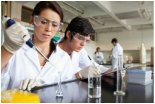 Testing is a loaded and political term in today’s educational system and with today’s post, I am officially entering the ring. Luckily, for purposes of discussing our testing philosophy, I can focus the discussion based on the parameters of Ideaventions Academy. Background People’s opinions are shaped by their environment and experiences and when the word test in an educational setting comes up, it evokes feelings of anxiety and judgement in me. I can only remember one test in all of my schooling career that I enjoyed. It was in college in one of Bob Solow’s Macroeconomics classes where in working through the problems and questions, the sequence of the questions, drew parallels to the events leading to the collapse of the Mexican economy in the 1990s. However, at the time, I was just thankful that another semester of final exams were over, but the “Aha!” moment in the middle of that exam will always stay with me. A defining moment for me was a few years ago when my older son took the SCAT test for admissions into Johns Hopkins CTY program. We took the test at a testing center with adults who were there for professional certifications. After the test was complete, we got into the elevator with a woman who had completed a certification exam and as the doors to the elevator closed, my son said, “That was fun! Can we do it again?” It took the elevator-ride down to pick both of our jaws up off the floor. Since high-pressure testing had never been part of his Montessori education, this was a fun time to do some math and answer language questions. His experience and attitude towards this standardized test got me thinking and changed my point of view: If you haven’t been conditioned for tests to be stressful, they can provide meaningful information without impacting the learning process. Fast forward four years…. As an educator and administrator, these are some goals and questions for each individual child:
Everyday There is a certain level of assessment that is constantly occurring in the classroom. With a small group of 8 students, teachers will engage students in casual conversation while they work to figure out what they have taken away from the lesson. Therefore, in a 1.5 hour class of 8 children, each student should have an opportunity to interact individually with the teacher for at least 5-7 minutes. Assessing students’ mastery of material can also come in many forms that don’t have to be tests. As an alternative to tests, student projects and presentations can be a great way to find out what students learned, but do require carefully designed project guidelines or rubrics. Or if you want to see what the class remembers from a prior unit, it can be done in the form of a game. In another scenario, having a student explain what they are working on, can tell a teacher a lot about their thought process and if they understand what they are doing and most importantly why - learning with a purpose. Creating a portfolio of work is an ideal way for children to demonstrate what they know and what they like while building skills that they will use for the rest of their professional lives. Global Teacher Prize winner, Nancie Atwell, said it best in the Education Week blog "We really need to be looking at what individual kids are achieving in the disciplines, authentically and personally." Benchmarks The other category is standardized or grade-normed tests. I struggled with this because I can see the effects of the stress and pressure placed on students and teachers alike. However, the scientist in me also values the information they provide. I find the results of these types of tests more useful when the child is benchmarked against him or herself over time. Because each child comes from a different starting point, standardized assessments tell us the trajectory of the child’s learning year over year. When I see a standardized test result of a student who gets 99% across the board, the first question I ask myself is how would she have done if given this test at the beginning of the year? Is this child a candidate for further acceleration? You get a very different picture if a student scores 40% at the beginning of the year and ends up with a 99% compared to a student that came in with a 94% and ended up with a 99%. And if I give them an above grade-level test at what grade does this student start scoring below 80% or 60%? I view these types of tests as data points that help parents, teachers and the school learn more about the learning needs of the individual child. Additionally, if scores are collected and compared across multiple years, then one is able to determine areas where the child has made more progress or where progress has slowed down. We can further examine those areas to try to understand the trend and any potential actions to take. The key here is the individual child. Taking the time to analyze the test data over time for the individual child, can turn that data into insights for developing a challenging environment for that child or catch areas that need to be addressed. To summarize, I believe that day-to-day assessments and evaluations should be done informally through the use of projects, presentations, games or quizzes without the stress of grades tied to them. I also believe that standardized testing, when the data is used to evaluate a child’s progress over time, can be helpful in understanding a child’s learning needs. 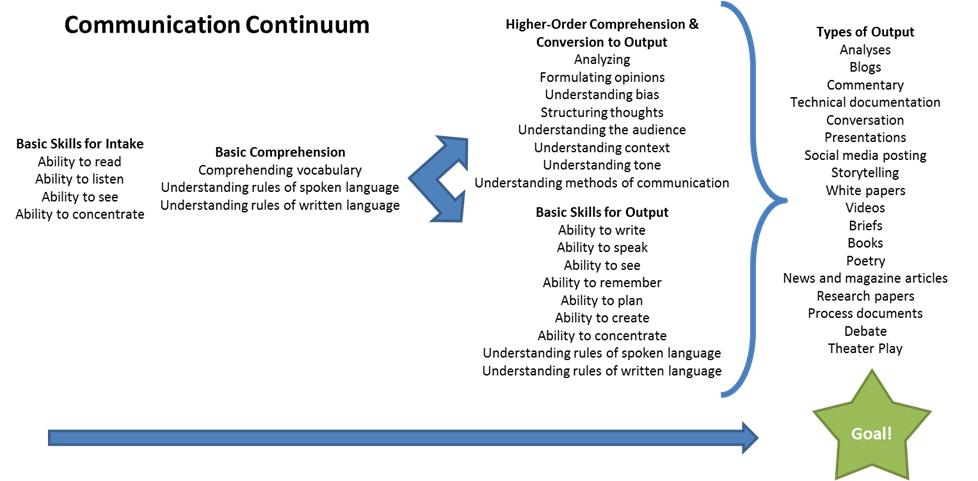 Today’s topic is about our philosophy on Language Arts, or English. It's being posted early because I get to go have fun at the US Science and Engineering X-STEM Symposium happening today! In retrospect, my personal philosophy about how English (aka Language Arts) should be taught was defined in Middle School when I took GT Humanities (combined English/American History) from the one teacher that had the most influence in my educational success, then reinforced through my experiences in the workplace. In her class, English wasn’t learned in isolation. My reading level was stretched through the texts that we read, both fiction and nonfiction. My writing and analysis was developed through a series of assignments that included creating a newspaper, creating a diorama, drawing a political cartoon, as well as completing the traditional book report or writing assignment. Most importantly, she taught me how to read a newspaper and understand bias and she challenged me to research in order to support my opinions. Finally, she believed enough in me to take a chance on me, this kid who had just learned how to speak English five years before, and asked me to be the Editor-in-Chief of the school newspaper. Goal In short, we view the primary goal of Language Arts in primary and secondary education, as learning how to communicate effectively both orally and through writing. This deceptively simple statement is made up of a myriad of physical and mental skills and processes that need to come together, which I find easier to explain using a diagram. This process is so complex and is individual to each child’s experiences, strengths, weakness, likes and dislikes. Additionally, when viewed from an academic standpoint, it is interrelated with other academic subjects, such as science, history, and art. How In line with our philosophy in other subjects, where the work is hands-on and has a purpose, we look at the study of Language Arts, like in Math and Engineering, from a “So what?” point of view. With that in mind, Language Arts is integrated into Humanities, Science and Engineering to give it purpose and context, but is also being done with the child’s unique strengths and weaknesses in mind. Let’s look at how that is done. Humanities: Creative and Analytical Communications The clearest and easiest point of integration is with History and Social Studies. When one studies American History or World History and Cultures, to truly understand what shapes that history, one has to understand the culture. In order to understand the culture, one needs to understand its people. And to understand its people, one needs to understand their literature, their music and their art. This can be done through analysis of primary source documents, reading of biographies and autobiographies, reading fiction or historical fiction, reading poetry, as well as news articles. Through continued exposure to challenging material, children’s vocabulary will continue to grow. Output can come in many forms. It can be a written analysis, it can be a documentary, it can be a poem, it can be a Literature Circle, or it can be a political cartoon. All of these types of output require understanding the topic. By giving the teacher the opportunity to work in a small classroom with 8-10 kids, the teacher will have the opportunity to learn the strengths and weaknesses of each child, and to give kids choices in how to present output. We fully expect that kids will gravitate to what is easiest for them, and that’s ok. We’re first going to focus on building trust with the teacher and with each other. Then, when that trust has been built, children can then be challenged to expand on choosing output outside of their comfort zones. When the individual child is ready, then coaching in writing and grammar will begin for that student. To close out how Language Arts is included in the Humanities curriculum, the only homework all students will have every day is to read from (or listen to) a challenging book of their choice for at least 30 minutes. Science: Technical Communications Another major integration point is between Language Arts and Science. While there’s a lot of experimentation that occurs with science, scientists need to know how to present their results. Scientists also need to know to justify their idea. And even more basic than that, scientists need to be able to research a topic in order to understand it. The type of writing and communication that you do in a natural science classroom or laboratory is technical writing. Sentence structure, vocabulary, organization of ideas and message are all still important, but the audience is different and the tone is different. In science, students will experience a different, yet very important, type of Language Arts education. Engineering: Persuasive and Technical Communications Our Engineering classes present yet another opportunity to hone in students’ communications skills. From technical design specifications, to a website that describes their product, students will get additional education in technical communications, as well as in persuasive language. Will 4th-grade students entering the school know how to do this? We don’t think so. It’s our job to expose them to the methods for communicating, memorializing, and selling their projects. I could go on and on. In Art, the Graphic Novels unit integrates storytelling in a unique way and in Community Service, students will practice (or learn) about correspondence and current events. In conclusion, the teaching opportunities for Language Arts are tremendous. It our responsibility as a school to find those teaching opportunities and incorporate them in a way that is interesting, meaningful, and that makes sense to the kids. Resources specific to Language Arts, that we like:
If you have others you like, please share them! I love learning about other learning options and creative teaching methods out there. |
AuthorJuliana Heitz is co-founder of Ideaventions Academy and is very excited to share the thinking behind the Academy. Archives
October 2023
Categories |
Copyright © 2010-2024| 12340 Pinecrest Road, Reston, Virginia 20191 | 703-860-0211 | [email protected] | Tax ID 27-2420631 | CEEB Code 470033
 RSS Feed
RSS Feed


